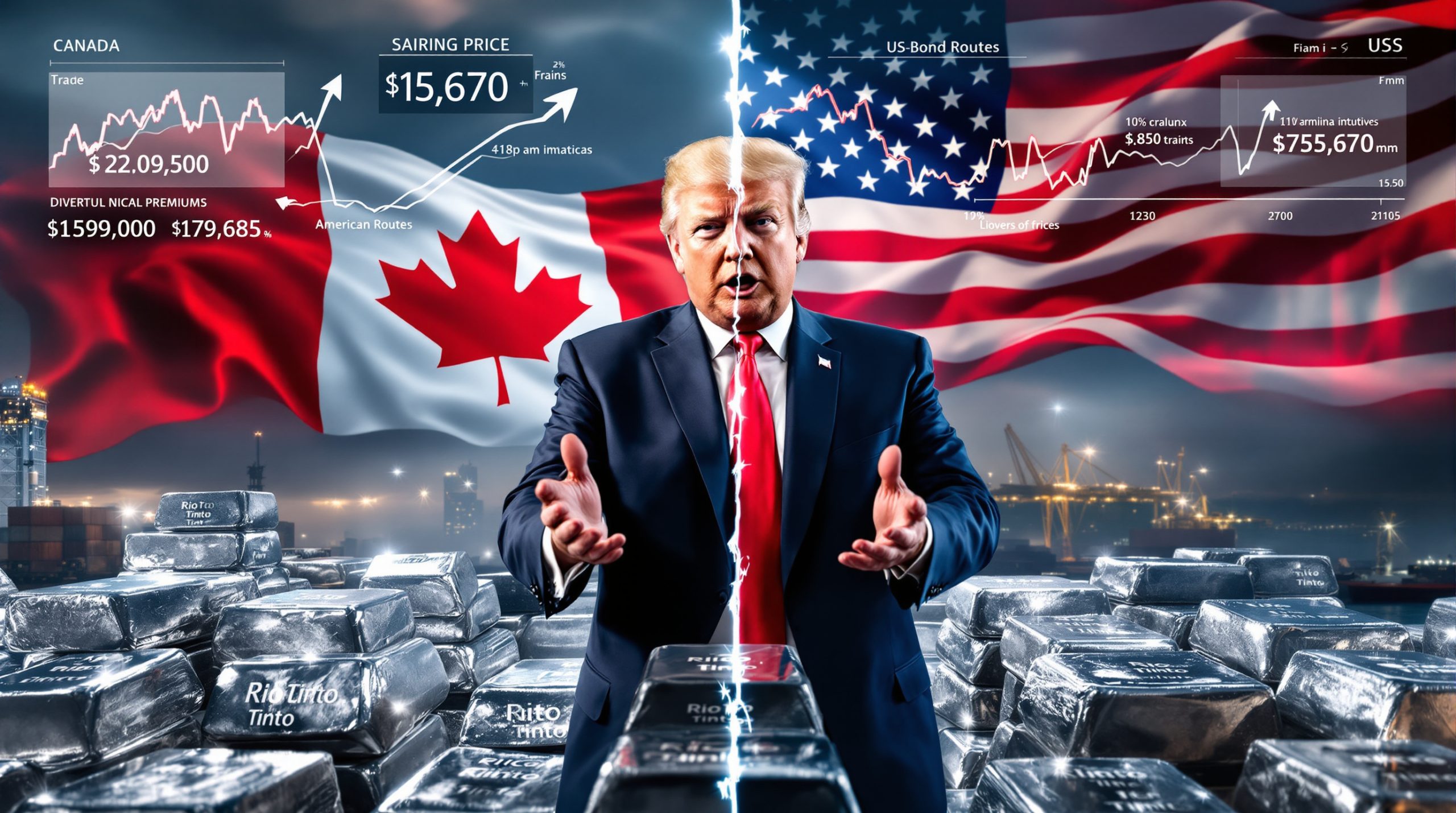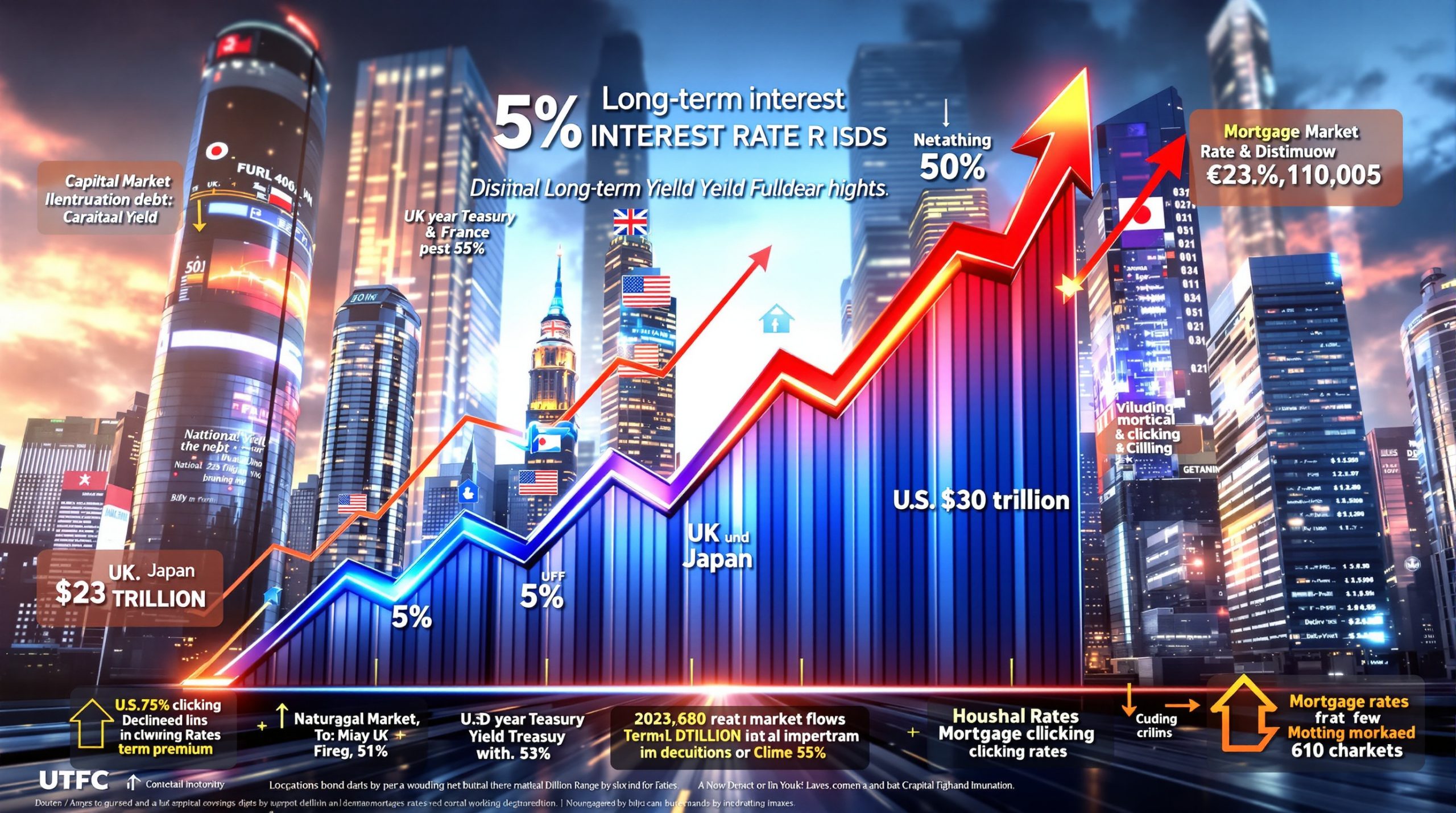Why Was Gold Flooding into the US Market?
The Tariff Risk Premium
The global gold market has experienced unprecedented disruption in recent months as traders rushed to get physical gold into the United States. This surge was primarily driven by fears that precious metals might be included in Trump's tariff policies and their impact on global commodities, creating a significant price premium in US markets.
Between late 2024 and early 2025, US gold prices traded at remarkable premiums to global benchmarks. The price differential between front-month Comex gold futures and London spot gold reached over $62 per ounce at its peak—an extraordinary gap in a market where even a $2-3 differential is considered significant.
Silver markets experienced similar disruption, with differentials exceeding $1 per ounce—a substantial premium in percentage terms given silver's lower base price compared to gold.
The Arbitrage Opportunity
This price disparity created one of the largest arbitrage opportunities in precious metals markets in decades. Major banks and commodity traders quickly positioned themselves to exploit the gap by purchasing gold in international markets and delivering it to the US.
"This was essentially free money for those with the infrastructure to move physical metal internationally," explains Anant Jatia, Chief Investment Officer of Greenland Investment Management. "The scale of the arbitrage was unprecedented in modern precious metals trading."
The mechanics behind this trade were straightforward but powerful: traders covered short positions in US markets while simultaneously building long positions in international markets, sustaining the price differential and incentivizing physical shipments to take advantage of the price gap.
How Has the Gold Influx Affected US Markets?
Record-Breaking Inventory Levels
The consequences of this arbitrage trade have been dramatic for US precious metals inventories, which have surged to historically unprecedented levels.
Since November 2024, US gold stocks increased by a staggering 26.5 million ounces—approximately 824 metric tons. This represents roughly 80% of global annual mining production, concentrated into just a few months of imports.
Silver witnessed an even more dramatic influx, with stocks rising by 174.6 million ounces during the same period. Together, these inflows represent over $80 billion worth of precious metals at current market prices.
The COMEX warehouses, where much of this metal has been delivered, reported capacity concerns by February 2025, with some facilities resorting to temporary storage solutions to accommodate the unprecedented volume.
Impact on US Trade Data
The massive influx of gold and silver has significantly distorted US trade statistics, creating challenges for economists and policymakers attempting to interpret economic trends.
In January 2025, the US trade deficit reached a record high, with precious metals imports accounting for approximately 18% of the widening gap. This distortion was so substantial that many economic analysts began explicitly excluding gold from their calculations to provide a clearer picture of underlying trade patterns.
"The gold trade has essentially been a one-time event that's skewing all the normal metrics we use to evaluate trade flows," noted Goldman Sachs in a February research note. "Adjusting for precious metals, the trade deficit actually contracted slightly compared to Q4 2024."
High precious metals inflows likely continued through February and March 2025, suggesting that when the data is reported, these months may show similar distortions.
What Changed with the Tariff Exemption Announcement?
Immediate Market Response
The race to get gold bars into the US is screeching to a halt on April 3, 2025, when the White House announced that precious metals would be exempt from the planned tariffs. Market reaction was immediate and dramatic.
Within hours of the announcement, US premiums for precious metals tumbled. The Comex-London gold differential collapsed from $62 to just $23 per ounce—still elevated by historical standards but representing a 63% reduction in the arbitrage opportunity.
Silver markets responded even more dramatically, with the exchange for physical (EFP) differential dropping from over $1 to just 24 cents per ounce. This collapse effectively closed the profitable arbitrage window that had driven the massive influx of metal.
The futures curve also normalized rapidly, with the contango (premium of future prices over spot) returning to more typical levels within days of the announcement.
Expert Assessment
Market participants were quick to recognize the significance of the policy shift.
"Yesterday's announcement effectively puts an end to the massive flow of precious metals into the US over the last few months as the EFPs collapse," stated Anant Jatia, CIO of Greenland Investment Management, in a client note. "The economics of shipping physical gold and silver to the US no longer make sense with premiums at these levels."
Trading desks at major banks confirmed this assessment, with one head metals trader at a tier-one investment bank commenting, "The gold trade of 2025 is over. Anyone still trying to move metal to the US at these spreads is going to lose money on the transaction costs alone."
What Happens Next for Gold Markets?
Lingering Effects
Despite the collapse in price differentials, some gold shipments may continue into April 2025 due to transactions booked before the arbitrage window closed. Industry sources estimate approximately 2-3 million ounces of gold were already in transit when the exemption was announced.
However, the collapse of the EFP to more normal levels indicates that new arbitrage-motivated shipments have essentially ceased. Market participants expect US import data for April to show a dramatic decline in precious metals imports compared to the first quarter of the year.
US inventories will remain elevated in the near term, with some market observers questioning how and when this excess metal might be redistributed globally. The presence of such large inventories could dampen price volatility in US markets for months to come.
Broader Precious Metals Outlook
The tariff exemptions announced on April 3 extend beyond gold and silver to include platinum and palladium—all four major precious metals traded on futures exchanges. This comprehensive approach removes a significant source of uncertainty from precious metals markets.
The policy shift comes amid a period of strong investment and central bank demand for gold, with official sector purchases exceeding 1,000 tons annually since 2022. China, Russia, and several Middle Eastern nations have been particularly aggressive buyers as they diversify reserves away from US dollar assets.
With the tariff-related distortion now resolved, market participants will refocus on gold market trends and investment insights for 2024–2025, including inflation expectations, interest rate policies, and geopolitical risks.
FAQ About the US Gold Market Situation
What exactly caused the gold arbitrage opportunity?
The arbitrage opportunity emerged from price disparities between US and global markets due to concerns that precious metals might be included in Trump's sweeping tariffs. This created a risk premium in US prices that reached historic levels.
The underlying mechanics involved traders covering short positions in US futures markets while buying physical metal internationally. This self-reinforcing cycle widened the price differential and created what traders called a "one-way trade" with minimal risk.
The unusual situation highlights how even the perception of trade policy changes can dramatically impact global commodity flows before any actual tariffs are implemented.
How significant was the gold influx to the US?
The influx was massive enough to distort US trade data, with combined gold and silver inflows worth over $80 billion. US gold stocks increased by 26.5 million ounces and silver stocks by 174.6 million ounces since November 2024.
To put this in perspective, the gold inflow alone represents approximately 2.5% of all above-ground gold in the world, concentrated into just a few months of imports. This volume of metal would typically take global miners over ten months to produce.
The physical movement of this metal required significant logistical coordination, with the race to move gold bars out of London becoming so intense that specialized security firms reported a 300% increase in demand for armored transport services during the first quarter of 2025.
Why did the US government exempt precious metals from tariffs?
While the specific reasoning wasn't detailed in the April 3 announcement, the exemption was part of a broader list that also excluded steel and aluminum, suggesting strategic economic considerations for materials critical to US manufacturing and financial markets.
Industry analysts speculate that the decision may reflect concerns about potential disruption to the US financial system, where insights into gold's role as a hedge in volatile markets plays an important role as a reserve asset for major institutions. Others point to the significant distortion in trade statistics as a possible motivation.
The exemption also aligns with historical precedent—precious metals have typically been excluded from trade restrictions due to their unique role as both industrial inputs and monetary assets. Analysis of gold price dynamics amid inflation and geopolitical risks has shown that such policy decisions can have far-reaching implications for global markets, which is why a market recap of key trends in gold and silver investments is essential for understanding the broader financial landscape.
According to global commodity market analysis, these developments could have long-term implications for how investors approach precious metals in their portfolios going forward.
Are You Looking for the Next Major Mineral Discovery?
Stay ahead of the market with Discovery Alert's proprietary Discovery IQ model, which instantly notifies investors of significant ASX mineral discoveries, turning complex data into actionable insights. Explore historic examples of exceptional returns on our dedicated discoveries page and begin your 30-day free trial today.




